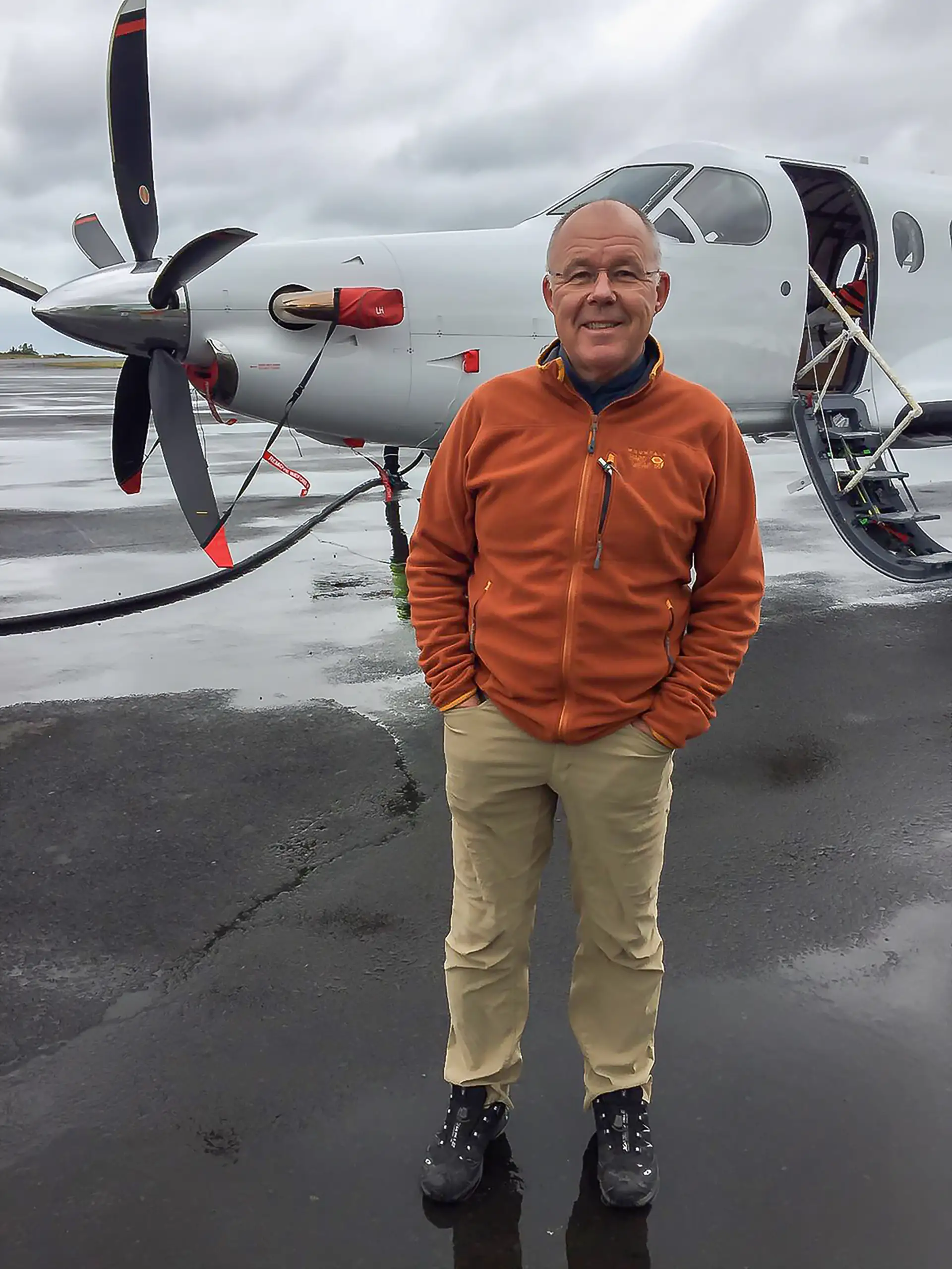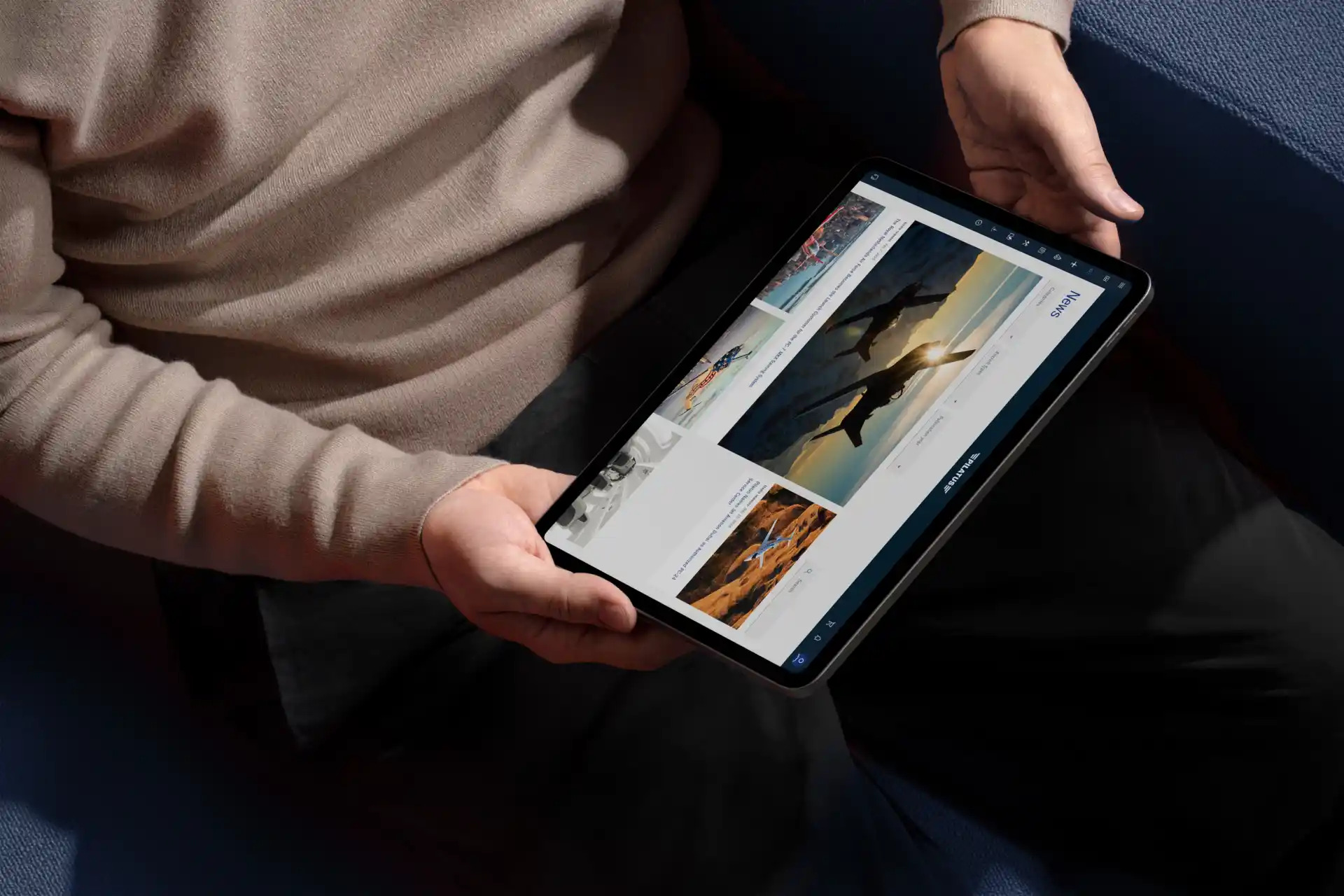Nik Gammeter already has many years’ experience as an airline pilot, flight instructor and examiner of flight instructors. He has flying in his blood and didn’t see retirement as any reason to stop doing what he loves!
Nik, did you always plan to become a pilot?
Yes, from a relatively early age. When I was ten, my godfather gifted me a scenic flight and I loved it! I’d had my heart set on becoming a train driver but flying appealed to me more. A friend and I did the flight aptitude test while we were still at school. Still a minor at the time, I had to have my parents’ authorisation, which turned out to be more difficult than I’d anticipated: my mother was worried, and only signed because she thought I’d wouldn’t pass the test anyway!
Why did you decide to become a career pilot?
Because I love flying so much, and because flying involves so many new challenges. There’s always something to learn! The second reason was the opportunity to do flight instruction. I was an instructor in the military and also with Swissair and, later on, with Swiss. I’ve kept that going, and I enjoy trying to motivate youngsters to consider flying as a career because it’s such a fascinating field of work.
What is it that you find so fascinating?
The machines, the speed and the third dimension! Flying allows you to see the world from another perspective. As an airline pilot, I flew to New York about 70 times, and no two flights were the same! I completed my 21st ferry flight in mid-January, and every trip is different.
Can you explain what a ferry flight is?
The aircraft produced by Pilatus for the European, Asian and African markets are made at the headquarters in Stans. Aircraft for the American market are completed by our subsidiary Pilatus Business Aircraft Ltd in Broomfield. A ferry flight is simply a flight for the purpose of transferring this “blank aircraft”. Some aircraft aren’t even painted, all they have is a coat of primer. The cockpit is finished, of course, but the interior looks nothing like it will do once the aircraft is ready for final handover. The fuselage is simply fitted with insulation and a panel to cover and protect the floor. Everything else is done in America.
How did you come into contact with Pilatus?
The wife of Reto Aeschlimann, Chief Test Pilot at Pilatus, used to work as a hostess with Swissair. Back in the 90s, she was on a flight to Hong Kong which I was operating as co-pilot, and Reto was a passenger. I knew Reto from our time together in the military but had lost sight of him in the meantime. Him being in the same aircraft was such a lucky coincidence! Later, with retirement approaching, I contacted him to let him know I’d like to continue flying. Things moved quickly after that: a PC-12 flight test in March, my last airline flight at the end of May and the first ferry flight for Pilatus in early June. I’ve enjoyed many interesting flights with Pilatus since then. I’ve flown into some fantastic airports only familiar to me from the sky during my time as an airline pilot.
Can you describe a typical day as a ferry pilot?
I make a start on the preparations two or three days before the flight. I take care of the administration: I book hotels at the destinations and complete handling and US immigration and customs formalities. Then I start to take a closer look at the weather. When that’s done, I can turn my attention to the rough plan: can I fly the normal route? Do I need to make any adjustments? The evening before departure I file flight plans for the first two legs and calculate the fuel required for the long flights on the second day. On the day of departure, I check the most recent weather info and stow the emergency equipment, which includes a dry suit and a raft. I check and prepare the emergency equipment for every flight myself. Then it’s time to go! A typical ferry flight takes three days.
What’s your best ferry pilot experience so far?
I love the changing weather we encounter on many ferry flights, and especially the views of Greenland on the leg between Reykjavík and Newfoundland. The island always looks different, depending on the time of year. Besides the ferry flights, my best experience so far was flying a brand-new PC-12 NG to the Bangalore air show in India.
What do you like about the PC-12 in particular?
I’m an electronics geek, and so I think the PC-12 NG cockpit is just wonderful! I flew for a long time with analog instruments, on the Jumbo, for example, and then for 18 years with Airbus from 1996 onward. I’ve never seen anything as modern as the equipment in the PC-12 NG. It’s totally fascinating to see how much these electronic systems can provide! Many airline pilots can only dream of equipment like this.
You were a flight instructor and examiner of flight instructors. Do you have any stories to tell us?
When I did my PC-12 training in early 2014, the flight instructor and current Pilatus test pilot, Anthony Vallon, came over to me and showed me his flight log: he had done a flight test with me in Sion some years ago, and now here he was, training me on the PC-12. What a coincidence!
Now we have one final question: what is the difference between landing an A330 and the PC-12?
There’s not really any big difference. A good landing is the result of a well-controlled, stable approach. If the approach is stable, one always ends up at a point where the landing starts, which pilots call the “gate”. And that’s true whatever the aircraft. From that point on, the procedure differs slightly from aircraft to aircraft. The A330 is heavier than the PC-12, but the basic principle is the same.
Nik, many thanks for the fascinating insights into your life as a ferry pilot and airline pilot of many years. We wish you many more memorable moments and safe flying!

